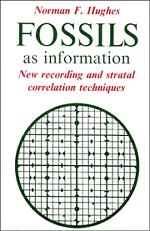Book contents
- Frontmatter
- Contents
- Preface
- Part A Problem of effectiveness
- Part B Proposed solution
- Part C Applications for information-handling
- 9 Earth and biologic evolution
- 10 Proposed new Period Classification of fossils of past organisms
- 11 Paleoenvironment investigation
- 12 General stratigraphic procedures
- 13 Limitations of the use of zones
- 14 Event-Correlation
- Part D Further considerations
- Appendices 1 and 2: Worked examples of GOR and PTR forms
- Glossary
- References
- Index
11 - Paleoenvironment investigation
Published online by Cambridge University Press: 02 February 2010
- Frontmatter
- Contents
- Preface
- Part A Problem of effectiveness
- Part B Proposed solution
- Part C Applications for information-handling
- 9 Earth and biologic evolution
- 10 Proposed new Period Classification of fossils of past organisms
- 11 Paleoenvironment investigation
- 12 General stratigraphic procedures
- 13 Limitations of the use of zones
- 14 Event-Correlation
- Part D Further considerations
- Appendices 1 and 2: Worked examples of GOR and PTR forms
- Glossary
- References
- Index
Summary
Uniformity and evolution. Understandably, in Quaternary studies the paleoenvironment conditions are interpreted from consideration of fossils deemed to be equivalent to their living counterparts; indeed the taxa employed in data-handling are based on reference types collected from the Holocene (<10ka) flora and fauna. The geologic time represented is short and such evolution as will have occurred in Quaternary (Pleistocene + Holocene; <1.6 Ma) time is regarded as too slight to be significant and is usually ignored. Almost certainly this does not affect the results desired and achieved, within the limits expected at present for such investigations. However, the small dangers involved in ignoring evolution on this scale naturally become more obvious when these methods are extended back into the Pliocene and by some authors through the whole duration of Cenozoic time.
In practice, the timing of the cut-off of methods between normal Phanerozoic paleontology and the Quaternary has to be arbitrary; it can only be logically selected by relating it to the precision and detail of results expected from the investigation in hand. Clearly, advances of knowledge and technique should ultimately progressively confine such uniformitarian methods within the Quaternary. Until that time, it is important that Miocene and Pliocene investigators should state clearly their aims and their position on this matter; they should refrain from any implication of ‘absence of evolution’ during investigations necessarily based on methods that assume no evolutionary change.
In the later parts of Cretaceous time or in the Paleogene Period, hard-pressed interpreters of paleoenvironment are often sorely tempted to use for example a pollen grain somewhat resembling (at CfB level) that of living Sonneratia to postulate the existence of mangrove swamps.
- Type
- Chapter
- Information
- Fossils as InformationNew Recording and Stratal Correlation Techniques, pp. 69 - 71Publisher: Cambridge University PressPrint publication year: 1989



